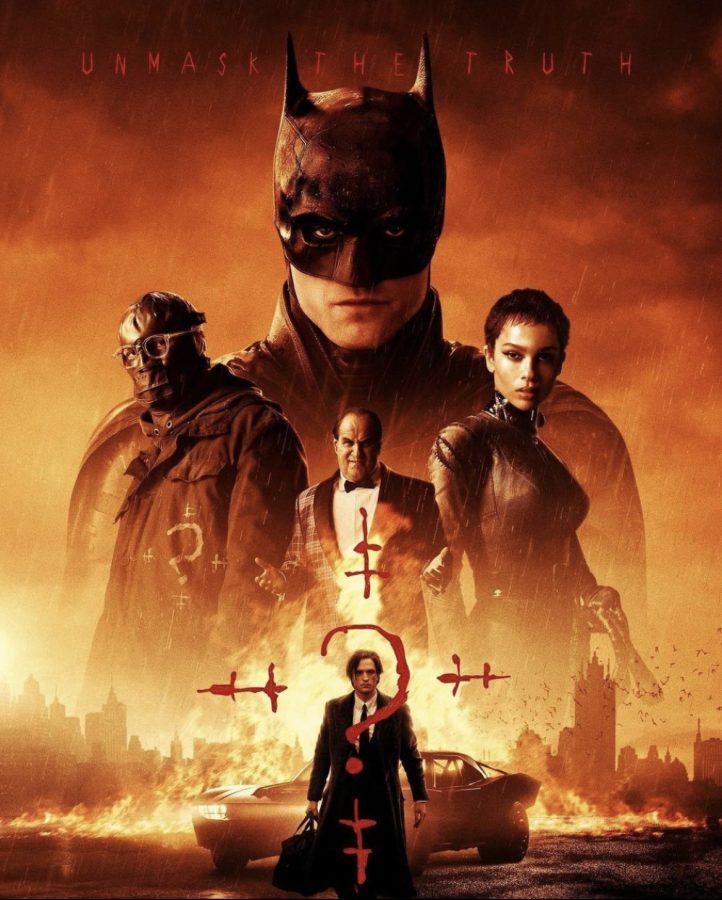*HOLY MODERATE SPOILERS BATMAN!*
Like it or not, our shadows never stop following us.
The many shadows of Batman’s cinematic legacy stretch long and wide over a multitude of decades and every new entry is expected to redefine it or die trying.
The 1940s serials and 1960s TV show/film were pure comic camp, but Tim Burton’s late 1980s/early 1990s run (“Batman,” “Batman Returns”) gave us pop art epics infused with a hefty dose of German Expressionism. Michael Keaton’s enigmatic portrayal of Batman was game changing and Michelle Pfeiffer’s Catwoman was instantly iconic; but while “Batman” shaped the modern superhero film as we know it, “Batman Returns”’ gleefully insidious panache stirred the ire of pissed off parents and studio Warner Bros; after all, trauma didn’t sell toys.
The mid-1990s Joel Schumacher era (“Batman Forever,” “Batman and Robin”) delivered some steely performances from Val Kilmer and George Clooney (and Uma Thurman going full camp), but the less said about that tacky Happy Meal headache the better.
Eight years later, the Caped Crusader would reemerge for Christopher Nolan’s universally heralded “Dark Knight Trilogy” (2005-2012); once again redefining the superhero genre with its grittier performances/approach and its ruminations on the concept of heroism. Christian Bale’s interpretation practically became cinematic canon; so much so that when the DCEU attempted a hard reboot for their new Justice League, the internet quickly made mincemeat of “Batfleck” (“WhY dId YoU sAy ThAt NaMe?!”).
This brings us to Matt Reeves’ (“Cloverfield,” “Planet of the Apes” trilogy) “The Batman;” which sees Bruce Wayne (Robert Pattinson), still relatively new to the batsuit, taking arms against Gotham’s sea of troubles as a demented, riddle loving serial killer (Paul Dano) sets the city on edge. When a sinister pattern emerges, Bruce teams up with cat-burglar Selina Kyle (Zoë Kravitz) to untangle an unthinkable web of lies. Riddle me this, riddle me that, is this the beginning of the end for the Bat?
So, one would think, considering the DCEU’s past track record, but “The Batman” is far from another rehash. It’s a rebirth.
In one interview, Reeves stated his intent to bring the hard-boiled detective side of Batman to the forefront; an approach that feels long overdue and yet incredibly novel. Pattinson proves to be one of the finest actors to don the cowl; his wounded Wayne scion turned weary yet driven sleuth-warrior is the perfect anchor for this caped caper. Kravitz (who is currently under criticism for her remarks regarding Will and Jaden Smith) delivers the most memorable Catwoman in decades and Dano’s disturbing take on the Riddler might just make the skin crawl off of your bones.
Much like Burton’s films, Gotham becomes a character of its own. As shot by recent Oscar winner Greig Fraser (“Dune,” “Rogue One: A Star Wars Story”) and designed by James Chinlund (“The Avengers, “The Fountain”), it’s an abyss of dark passages and flickering street lights where even the sunlight feels stifled. Furthermore, Michael Giacchino ups the ante with a score for the ages: from its Imperial March adjacent theme to its chilling repurposing of Schubert’s “Ave Maria.”
Alongside these classic noir influences, David Fincher’s signature brand of neo-noir being among the most prominent, “The Batman” is lovingly indebted to noir’s paranoid offspring; the conspiracy thrillers of the 1970s. In a city like Gotham, trust and truth are equally elusive. Here, the back room deals are murkier than the back alleys and the rabbit holes go deeper than Wonderland itself.
Reeves and Peter Craig’s script holds a mirror to Bruce Wayne’s status in a way filmgoers haven’t seen in live action adaptations; the result is a twisting yet thrilling treatise on the poisons of privilege (or lack thereof) and the spectrum of vengeance. How do you take on a deeply rotten system when you’ve been built up by and actively benefiting from it your whole life? How thin is the line between righteous justice and selfish carnage? What constitutes a “proper” use of one’s position? Throw in a few horror elements from films like “Halloween” (POV beginning, the backseat attack) and you’ve got a descent into the underworld that you’ll want a few round trips of.
By returning Batman to his noir genre roots, “The Batman” strikes the perfect balance between Nolan era grit and Burton era grandeur – drawing from the past yet transcending it. In this new world of (literal) gods and monsters, Reeves’ vision expertly grounds the superhero film and may serve as a much needed sea change for the now omnipresent genre. For in the darkness, there is light.
8.5/10










